The Deep Brain Stimulation Cost in Singapore approximately starts from USD 55000
Deep brain stimulation is a specialized treatment used for the treatment of movement disorders such as dystonia, Parkinson’s disease, and essential tremors. Recently, the use of this procedure has been shown to be highly effective in the treatment of obsessive-compulsive disorder. It is a neurosurgical procedure that involves the placement of a device called deep brain stimulator, which sends signals to specific areas of the brain to stop the symptoms associated with a movement disorder.
Deep brain stimulation in Singapore is conducted across all major neurosurgery hospitals. This is a highly sensitive and critical procedure that involves the placement of electrodes within specific areas of the brain that trigger symptoms associated with the motor disorder. This is the reason why this procedure must be conducted by only an experienced and skilled surgeon. Singapore is known for its brigade of highly qualified brain surgeons who are mostly educated from the best medical universities in the world.
Developed in 1987, DBS therapy is an adjustable and reversible surgical treatment which is performed when medication alone cannot adequately control the symptoms. People should make their way to Singapore if they are facing some serious movement disorders such as Dystonia, Epilepsy, Essential tremor, Obsessive-compulsive disorder, Parkinsons Disease. Singapore is a well-recognized medical destination where more than hundreds of patients have benefitted from DBS therapy. Neurodegenerative Disease in Singapore is nothing new as the country has battled against brain disorders for many years and the war is still in the light. Thus, Singapore, with its modern and advanced techniques, offers the best DBS therapy across the globe.
Treatment cost
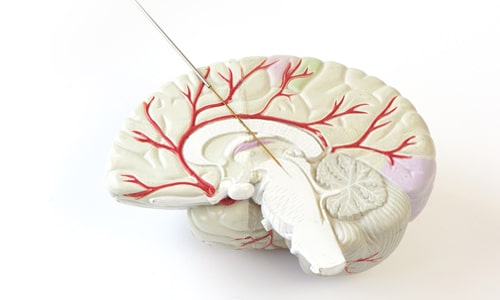
Gurgaon, India
USD 26250 USD 30000
Verfifed
MediGence is offering immense facilities for your medical journey such as:
We provide packages at economical prices with a number of additional benefits which make it a better opportunity than spending actual hospital costs with singular benefits. A device which transmits electrical signals to those areas of the brain which are the source of various body movements is implanted and this process is known as Deep Brain Stimulation. It involves placing electrodes deep in the brain and connecting them with a stimulator device. Deep Brain Stimulation helps with symptoms that are caused by Parkinson�s disease, dystonia, or essential tremor. Rechargeable batteries in the implant have a life of 15 to 25 years., All inclusive packages are available with us for all your needs regarding Deep Brain Stimulation to be done in Artemis Health Institute, India.
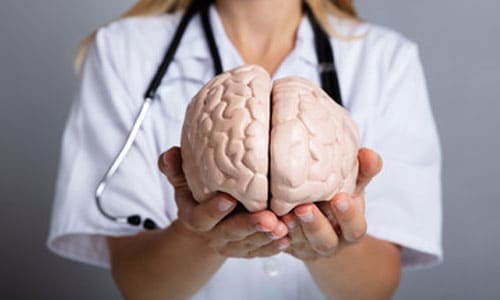
Istanbul, Turkey
USD 25000 USD 30000
Verfifed
We provide numerous services for your medical journey, including:
We provide packages at economical prices with a number of additional benefits which make it a better opportunity than spending actual hospital costs with singular benefits. A device that transmits electrical signals to those areas of the brain which are the source of various body movements is implanted and this process is known as Deep Brain Stimulation. It involves placing electrodes deep in the brain and connecting them with a stimulator device. Deep Brain Stimulation helps with symptoms that are caused by Parkinson's disease, dystonia, or essential tremor. Rechargeable batteries in the implant have a life of 15 to 25 years., All inclusive packages are available with us for all your needs regarding Deep Brain Stimulation to be done in NPISTANBUL Brain Hospital, Turkey.
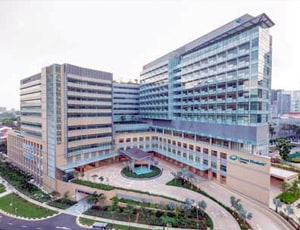
Mount Elizabeth Novena Hospital located in Novena, Singapore is accredited by JCI. Also listed below are some of the most prominent infrastructural details:
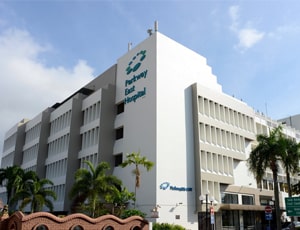
Parkway East Hospital located in Joo Chiat Pl, Singapore is accredited by JCI. Also listed below are some of the most prominent infrastructural details:
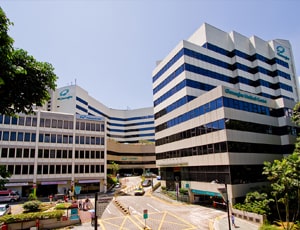
Gleneagles Hospital located in Napier Road, Singapore is accredited by JCI. Also listed below are some of the most prominent infrastructural details:

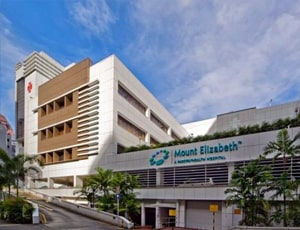
Mount Elizabeth Hospital located in Singapore, Singapore is accredited by JCI. Also listed below are some of the most prominent infrastructural details:
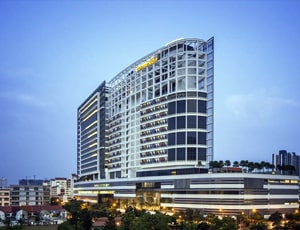
Apart from in-detail treatment procedures available, Farrer Park Hospital located in Connexion, Singapore has a wide variety of facilities available for International Patients. Some of the facilities which are provided by them are Accommodation, Airport Transfer, Choice of Meals, Interpreter, SIM, TV inside room. Also listed below are some of the most prominent infrastructural details:
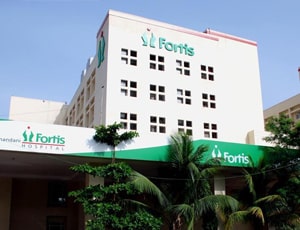
Types of Deep Brain Stimulation in Fortis Hiranandani Hospital and its associated cost
| Treatment Option | Approximate Cost Range (USD) | Approximate Cost Range (INR) |
|---|---|---|
| DBS (Overall) | 15208 - 35435 | 1247537 - 2926034 |
| Subthalamic Nucleus (STN) | 10128 - 25386 | 828377 - 2082426 |
| Globus Pallidus Internus (GPi) | 12143 - 28343 | 1001719 - 2327252 |
| Ventral Intermediate Nucleus (VIM) | 15287 - 35662 | 1248272 - 2920864 |
DOCTORS IN 13 SPECIALITIES
FACILITIES & AMENITIES
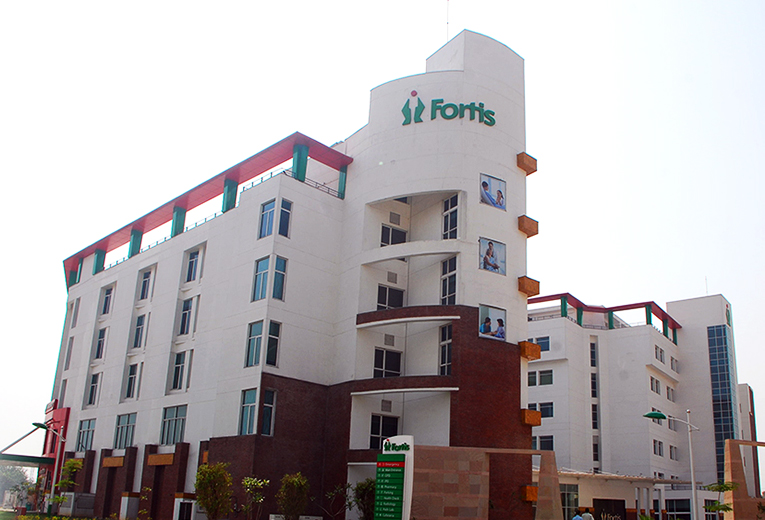
Types of Deep Brain Stimulation & Its Cost at Fortis Hospital, Shalimar Bagh
| Treatment Option | Approximate Cost Range (USD) | Approximate Cost Range (INR) |
|---|---|---|
| Overall DBS Surgery Cost | 40,000 - 50,000 | 3280000 - 4100000 |
| DBS Surgery (Single Electrode) | 20,000 - 25,000 | 1640000 - 2050000 |
| DBS Surgery (Dual Electrodes) | 25,000 - 30,000 | 2050000 - 2460000 |
Factors affecting Deep Brain Stimulation cost in Fortis Hospital, Shalimar Bagh
| Cost Factors | Cost Range (USD) | Cost Range (INR) |
|---|---|---|
| DBS Device and Implantation Cost | 10,000 - 15,000 | 820000 - 1230000 |
| Pre-operative Evaluation and Tests | 1,500 - 2,500 | 123000 - 205000 |
| Anesthesia Charges | 800 - 1,200 | 65600 - 98400 |
| Hospital Stay (per day) | 120 - 300 | 9840 - 24600 |
| Medications and Consumables | 1,500 - 2,500 | 123000 - 205000 |
| Physiotherapy and Rehabilitation | 50 - 200 per session | 4100 - 16400 (per session) |
| Follow-up Visits and Consultations | 150 - 250 per visit | 12300 - 20500 (per visit) |
DOCTORS IN 14 SPECIALITIES
FACILITIES & AMENITIES
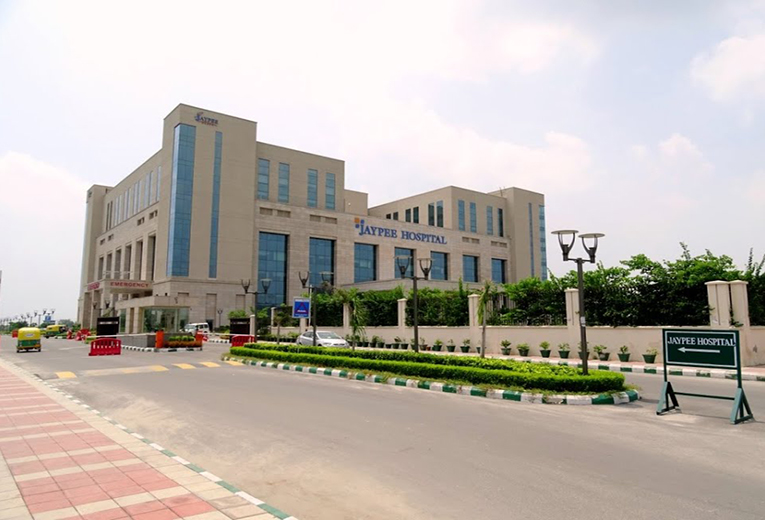
Types of Deep Brain Stimulation & Its Cost at Jaypee Hospital
| Treatment Option | Approximate Cost Range (USD) | Approximate Cost Range (INR) |
|---|---|---|
| Overall DBS Surgery Cost | 25,000 - 35,000 | 2050000 - 2870000 |
| DBS Surgery (Single Electrode) | 25,000 - 30,000 | 2050000 - 2460000 |
| DBS Surgery (Dual Electrodes) | 30,000 - 35,000 | 2460000 - 2870000 |
Factors affecting Deep Brain Stimulation cost in Jaypee Hospital
| Cost Factors | Cost Range (USD) | Cost Range (INR) |
|---|---|---|
| Surgeon's Fee | 2,000 - 4,000 | 164000 - 328000 |
| Anesthesia Charges | 500 - 1,000 | 41000 - 82000 |
| Hospital Room Charges | 150 - 270 | 12300 - 22140 |
| Operating Room Charges | 1,500 - 3,000 | 123000 - 246000 |
| DBS Device and Implantation | 10,000 - 15,000 | 820000 - 1230000 |
| Medications | 200 - 2000 | 16400 - 164000 |
| Diagnostic Tests | 500 - 1,500 | 41000 - 123000 |
| Physiotherapy | 30 - 150 per session | 2460 - 12300 (per session) |
| Follow-up Consultations | 100 - 300 | 8200 - 24600 |
| Programming and Adjustments | 500 - 1,500 | 41000 - 123000 |
| Battery Replacement | 3,000 - 6,000 | 246000 - 492000 |
DOCTORS IN 14 SPECIALITIES
FACILITIES & AMENITIES
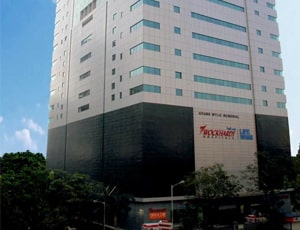
Types of Deep Brain Stimulation in Wockhardt Hospital - A New Age Hospital and its associated cost
| Treatment Option | Approximate Cost Range (USD) | Approximate Cost Range (INR) |
|---|---|---|
| DBS (Overall) | 15250 - 35636 | 1249142 - 2919977 |
| Subthalamic Nucleus (STN) | 10167 - 25433 | 835942 - 2076449 |
| Globus Pallidus Internus (GPi) | 12165 - 28355 | 1000553 - 2338016 |
| Ventral Intermediate Nucleus (VIM) | 15156 - 35558 | 1250025 - 2903463 |
DOCTORS IN 12 SPECIALITIES
FACILITIES & AMENITIES
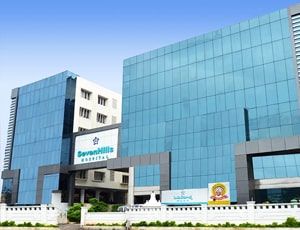
Types of Deep Brain Stimulation in Seven Hills Hospital and its associated cost
| Treatment Option | Approximate Cost Range (USD) | Approximate Cost Range (INR) |
|---|---|---|
| DBS (Overall) | 16662 - 40081 | 1381993 - 3250685 |
| Subthalamic Nucleus (STN) | 11373 - 28443 | 904056 - 2328357 |
| Globus Pallidus Internus (GPi) | 13249 - 32199 | 1094906 - 2554973 |
| Ventral Intermediate Nucleus (VIM) | 17226 - 39920 | 1400978 - 3229245 |
DOCTORS IN 11 SPECIALITIES
FACILITIES & AMENITIES
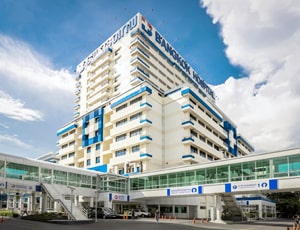
Types of Deep Brain Stimulation in Bangkok Hospital and its associated cost
| Treatment Option | Approximate Cost Range (USD) | Approximate Cost Range (THB) |
|---|---|---|
| DBS (Overall) | 18863 - 39727 | 675208 - 1454632 |
| Subthalamic Nucleus (STN) | 15187 - 38418 | 544511 - 1349420 |
| Globus Pallidus Internus (GPi) | 16319 - 37615 | 583627 - 1362743 |
| Ventral Intermediate Nucleus (VIM) | 20373 - 41914 | 721940 - 1476776 |
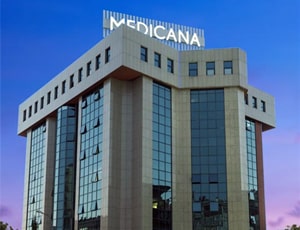
Types of Deep Brain Stimulation in Medicana Camlica Hospital and its associated cost
| Treatment Option | Approximate Cost Range (USD) | Approximate Cost Range (TRY) |
|---|---|---|
| DBS (Overall) | 19857 - 34095 | 620678 - 1021972 |
| Subthalamic Nucleus (STN) | 16715 - 32135 | 510928 - 960532 |
| Globus Pallidus Internus (GPi) | 13575 - 29714 | 409369 - 869832 |
| Ventral Intermediate Nucleus (VIM) | 20462 - 33105 | 612482 - 1025771 |
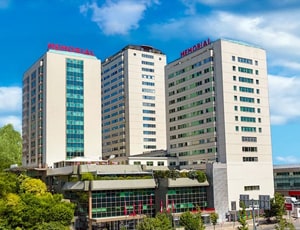
Types of Deep Brain Stimulation in Memorial Sisli Hospital and its associated cost
| Treatment Option | Approximate Cost Range (USD) | Approximate Cost Range (TRY) |
|---|---|---|
| DBS (Overall) | 20533 - 34204 | 615543 - 1016135 |
| Subthalamic Nucleus (STN) | 16833 - 31316 | 505917 - 961815 |
| Globus Pallidus Internus (GPi) | 13462 - 28735 | 408527 - 863568 |
| Ventral Intermediate Nucleus (VIM) | 19972 - 33754 | 601731 - 1038629 |
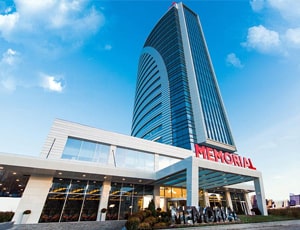
Types of Deep Brain Stimulation in Memorial Ankara Hospital and its associated cost
| Treatment Option | Approximate Cost Range (USD) | Approximate Cost Range (TRY) |
|---|---|---|
| DBS (Overall) | 20488 - 33443 | 605015 - 1003452 |
| Subthalamic Nucleus (STN) | 16651 - 31573 | 504638 - 950889 |
| Globus Pallidus Internus (GPi) | 13448 - 28901 | 403524 - 892616 |
| Ventral Intermediate Nucleus (VIM) | 20285 - 33079 | 610490 - 999679 |
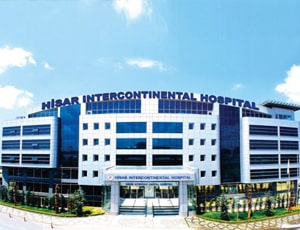
Types of Deep Brain Stimulation in Hisar Intercontinental Hospital and its associated cost
| Treatment Option | Approximate Cost Range (USD) | Approximate Cost Range (TRY) |
|---|---|---|
| DBS (Overall) | 20010 - 34004 | 617175 - 1001763 |
| Subthalamic Nucleus (STN) | 17032 - 31699 | 519082 - 942060 |
| Globus Pallidus Internus (GPi) | 13349 - 29089 | 402864 - 878257 |
| Ventral Intermediate Nucleus (VIM) | 20316 - 34289 | 607582 - 1017031 |
Deep brain stimulation (DBS) is a neurosurgical procedure that involves the implantation of electrodes within the specific targeted areas of the brain. It is used to treat a variety of disabling neurological symptoms.
Deep brain stimulation uses a neurostimulator, commonly referred to as a deep brain stimulator, to deliver electrical stimulation to targeted areas in the brain that control movement.
The impulse sent by the deep brain stimulator interferes with and blocks the electrical signals that cause tremors and other Parkinson’s disease symptoms. The targeted areas most often include the thalamus, subthalamic nucleus, and globus pallidus. Deep brain stimulation procedure has a long history of research. It was first introduced in 1987 and The Food and Drug Administration (FDA) approved deep brain stimulation treatment for essential tremor and Parkinson's disease in 1997.
A pacemaker-like device inserted under the skin in the upper chest regulates the amount of stimulation during deep brain stimulation. The electrodes in the brain are connected to this device by a wire that passes beneath the skin.
Deep brain stimulation treatment has proven effective in most cases, but it could potentially result in serious complications and side effects. This is the main reason why deep brain stimulation treatment is used only for patients whose symptoms are not appropriately controlled with medications.
During the deep brain stimulation therapy, the neurosurgeon first uses an MRI or computed tomography CT scan to identify the exact target within the brain where electrical nerve signals generate the symptoms. Some doctors may use microelectrode recording (a small wire that observes the activity of nerve cells in the target area) to more specifically and precisely identify the target in the brain that will be stimulated during the treatment.
After identifying the targets in the brain, there are several ways in which the permanent electrodes are placed into the target areas. The patient is given a local anesthetic before the procedure, and then the neurosurgeon implants the electrode by making small holes in the skull. The implanted electrodes are connected with extensions (a thin insulated wire) connected with the stimulator. These extensions are passed by some incisions under the skin of the head, neck, and shoulder. A deep brain stimulator is a battery-operated medical device similar to a heart pacemaker. It is implanted under the skin near the collarbone or in the chest.
The surgeon schedules a time to program the generator a few weeks following surgery. The generator continuously pulses electricity into the brain once it has been programmed. With the help of a specialized remote control, the Patient may operate the generator and switch it on or off.
Ask your healthcare adviser for the best multiple options and choose the one that meets your expectations
The minimum cost of Deep Brain Stimulation in Singapore is about USD$ 55000. Deep Brain Stimulation in Singapore is available across many hospitals in different states.
Deep Brain Stimulation cost in Singapore varies from one hospital to the other. The top hospitals for Deep Brain Stimulation in Singapore covers all the expenses related to the pre-surgery investigations of the candidate. The treatment cost usually includes the expenses related to hospitalization, surgery, nursing, medicines, and anesthesia. A prolonged hospital stay due to delayed recovery, new diagnosis and complications after surgery may increase the cost of Deep Brain Stimulation in Singapore.
There are several best hospitals for Deep Brain Stimulation in Singapore. The following are some of the most renowned hospitals for Deep Brain Stimulation in Singapore:
The recovery of the patient many vary, depending on several factors. However, on an average, patient is supposed to stay for about 21 days in the country after discharge. This is important to ensure that the surgery was successful. During this time, control and follow-up tests take place to check for medical fitness.
One of the topmost destinations for Deep Brain Stimulation is Singapore. It has a variety of accredited hospital, affordable cost of treatment and some of the best medical fraternity. Some of the other destinations that are popular for Deep Brain Stimulation include the following:
Apart from the cost of Deep Brain Stimulation, the patient is also required to pay additionally for daily meals and guest house accommodation. These charges may vary starting from USD$ 60 per person.
Some of the best cities in Singapore which offer Deep Brain Stimulation are:
After Deep Brain Stimulation, the patient is supposed to stay for about 2 days in the hospital for recovery and monitoring. The doctors team review the patient's recovery during this time with the help of blood tests and imaging scans. Once they feel that everything is on track, the patient is discharged.
The average rating for Deep Brain Stimulation hospitals in Singapore is 4.2. This rating is calculated based on several parameters such as hygiene, politeness of staff, infrastructure and quality of services.
There are about 5 hospitals in Singapore that offer Deep Brain Stimulation to international patients. These hospitals have the required expertise as well as infrastructure available to handly patients who need Deep Brain Stimulation
Singapore, being the most preferred place to get treated for movement disorders, offers the cost of deep brain stimulation around $60,000 in private practices. The noting point here is, the cost heavily depends on the hospitals chosen and the expense may get smaller in number according to the rate of
To treat a neurodegenerative disorder, such as tremor, Parkinson, and dystonia, Singapore boasts world-class neurosurgeons that are highly trained and hold a renowned degree in neurology. Every Top Neurosurgeon in Singapore has an outstanding and friendly approach towards patients. Below is the list of top neurosurgeons in Singapore for deep brain stimulation:
Dr Ivan Ng Hua Bak
Dr Chumpon Chantharakulpongsa
Dr Ernest Wang Chee Meng
Dr Seow Wan Tew
Assoc. Prof. Christopher Ang Beng Ti
Dr Pang Boon Chuan
Dr Rajendra Tiruchelvarayan
Dr David Low Chyi
Ong Peck Leong